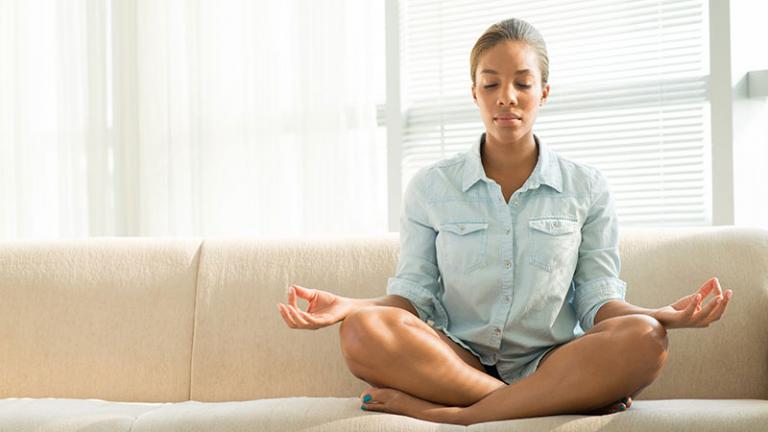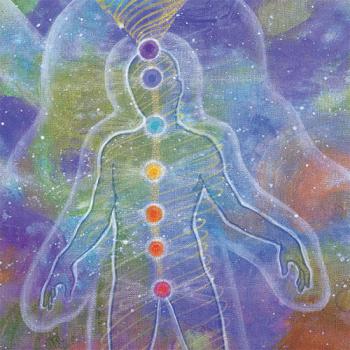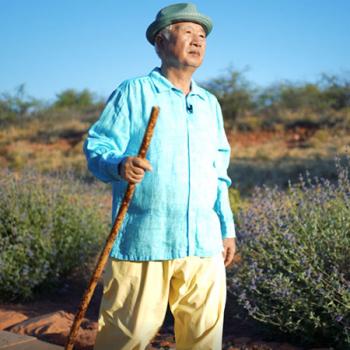
We speak of time as though it has three parts—past, present, and future. But, two of those are only in our minds; the past is just fallible memory and the future is nothing but an imagined projection. The present moment, the now, is the only place in time that is real, the only place from which we can make the choices that shape our lives. Learning to stay focused on the present moment, however, is not always easy, but it is an important spiritual practice that can transform your life.
Staying Centered During Difficult Times
These days, there is a lot going on that can draw us away from the present moment. Pandemics threaten our health, the planet is warming toward disaster, and international politics remains unstable and tense. It is easy to get caught up in negative thinking as we run various disaster scenarios through our minds. What if the economy collapses? What if World War III comes? What if we do nothing to save the planet from global warming?
While it is important to act to solve these dilemmas, it does not help anything to live as though a catastrophic future is inevitable. In fact, keeping hope in the now and acting from the now is the only way to solve anything. But how do we avoid giving in to the panic when the whole world seems to be dissolving into fear and chaos?
Finding Your Center, Keeping Your Center
One thing has always been true for humans—our lives are full of turmoil. While there is an ebb and flow of negative and positive forces in our lives, at any given moment there is always some kind of trouble to face. If it is not something in our own lives, it is something in the world that upsets our minds’ equanimity. That seems very unlucky to have to live that way, but I would say just the opposite. We were placed in this condition precisely because it is the environment that challenges our souls to grow. But you may ask, “How can I grow in a world that threatens to harm me?”
Answering that question is a matter of knowing who you really are and keeping centered in that reality. If you are feeling frightened or off balance, I recommend first finding your center within your body. You can do this anywhere at any time during the day, even while busy driving a car or shopping in a grocery store. All you need to do is draw your attention back from the outside world into your dahnjon, your energy center in the lower abdomen. Here’s how you do it:
- First, just watch your mind without judgement. Notice all the stray thoughts zipping through your brain. “I have a lot of thoughts” might become one of those thoughts. That’s okay; this is a very normal human condition.
- Now ask yourself, “How many of these are real? How many of these thoughts do I need?” Some might be pertinent to what you are doing right now, like, “There’s a stop sign” or “I need to buy some toothpaste,” but the ones that really worry you, like, “What if I get sick?” or “What if I lose my job?” probably do you little good.
- Now, notice the effect of your thoughts on your body. Probably, the negative thoughts you entertain are causing tension within your body. Breathe deeply and try to let a bit of the tension go with every breath.
- As you become aware of the tensions within your body, focus your mind on your lower dahnjon, located two inches below your belly button and two inches inside the abdomen. This is the center of your physical body, and you will notice an automatic sense of centeredness and a reduction in tension if you bring your mind back to this spot. Continue to breathe and release tension as you focus on the dahnjon.
If you try this, you will feel a difference immediately. It is like finding a foundation for your mind and body. And, any time the world draws you away from this center with all its tragedies and confusion, bring yourself back to this place, the core of your being in the now. Nothing about this exercise will take you away from the storms of life, but it will help you sit in the calm, peaceful center of existence.
The Power of Watching
One of the first and most essential practices I teach students is simply called “watching.” This practice is simply a matter of seeing yourself honestly from a slightly distant perspective, as the “eye seeing the I.” From this perspective, you can ask yourself some important questions, such as “What am I really feeling right now?” and “Is this emotion needed? Is it serving me well?” And, you will be able to see what thoughts and emotions are throwing you off kilter, like a building swaying in a strong wind.
After this exercise, I teach beginning students an important mantra: “My emotions are not me but mine.” This is important because sometimes people think their emotions exist beyond their control, but that is not true. We can choose our emotions, instead of letting them overwhelm us. It can take many years of practice to truly master this, but you can start by seeing your emotions as your servant, not your master, and by bringing your focus back to your dahnjon any time you feel flustered or upset by life.
The Now Is Your Artists’ Studio
Once you learn to bring yourself back to your center, you will be able to recreate your life in whatever way you wish. This is the space from which you can create new plans and accomplish new goals. Worrying about the future or lamenting the past will never help you with that. You can learn from the past, yes, but don’t wallow in regret or anger. You can plan for the future, but don’t live as though “what ifs” are more important than “right now.” I always tell people that they are “brain artists” because they have the power to create anything that they want, if only they will allow themselves to do so. That can only happen in the now, however, since that is the only place in time where anything can happen. So bring yourself back to this place again and again, until it is the only place that you live.












